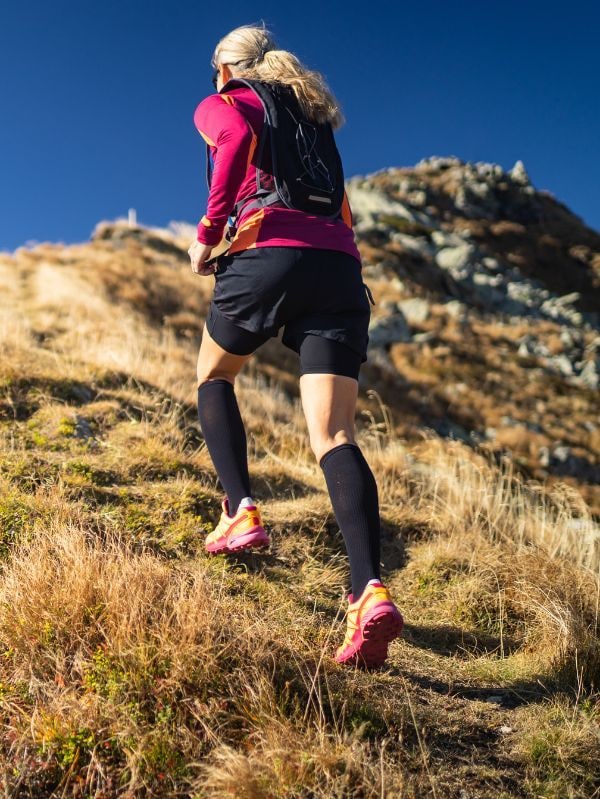Let’s be real—when you’re deep into a 10-mile hike, every little thing matters. The weight of your backpack, the grip on your boots, and above all, the comfort of your hiking socks. I’ve tried just about every kind—synthetic blends, merino wool, bamboo—but nothing compares to alpaca hiking socks. If you’re searching for the best hiking socks for all seasons, terrains, and weather shifts, keep reading—this is your go-to guide, based on real trail experience.
I’m counting down from reason 5 to 1. Trust me, the #1 benefit might just change how you pack for your next trek.
5. Style, Fit & Options for Everyone
Whether you're buying for yourself or gearing up the whole family, there’s something out there. From alpaca socks for men to alpaca socks for women, today’s designs are functional and stylish. Made right here in the USA, many brands are stepping up their game with seamless toes, arch support, and sleek outdoor-ready patterns. Whether you're hitting trails or strolling through town post-hike, they don’t just feel good—they look good.
Alpaca socks for women and men
4. A Step Toward Sustainability
Let’s talk gear ethics. If you're like me, you're trying to reduce your footprint, even on the trail. Choosing sustainable hiking gear like alpaca wool socks means supporting a naturally renewable fiber with a low environmental impact. Alpacas gently graze without destroying grasslands, their fleece doesn’t require harsh chemical processing, and most alpaca socks are dyed using eco-conscious methods. Bottom line: your gear shouldn’t just perform—it should align with your values.
Alpaca wool socks
3. Socks That Outlast Your Trails
Raise your hand if you’ve had socks fall apart halfway through a hiking season. Yeah, me too. That’s where durable hiking socks made from alpaca step in. Alpaca fibers are stronger than wool and naturally resistant to abrasion. My alpaca hiking gear has seen snow, sand, forest mud, and river crossings—and they’re still going strong. No thinning, no holes. Just adventure-ready reliability.
Alpaca hiking gear
2. Year-Round Comfort with Thermoregulating Power
If you hike in both hot summers and freezing winters, you need socks that adapt. Alpaca fibers are thermoregulating, making them perfect as all season hiking socks. In the heat, they act like breathable hiking socks, wicking away sweat and preventing overheating. In the cold, they work like warm hiking socks, keeping your feet cozy without bulk. You won’t believe the temperature control until you try them yourself.
1. Ultimate Foot Comfort: Dry, Cushioned & Blister-Free
This one’s the game-changer. Good socks don’t just protect—they enhance your performance. Alpaca fibers are naturally moisture wicking, meaning they pull sweat away and keep your feet dry during long treks. Combine that with targeted padding and shock absorption—yes, I’m talking about cushioned alpaca socks—and you’ve got the formula for zero blisters and all-day comfort. No friction, no odor, no soggy toes. Just pure trail bliss.
Cushioned alpaca socks
Key Factors When Choosing Trekking Socks
1. Season and weather conditions:
Start by thinking about the season. In winter, you’ll need thermal socks with strong insulation, such as those made from alpaca or merino wool, which stay warm even when damp. For summer hikes, go for lightweight, breathable fabrics like bamboo or natural fiber blends with technical yarns to wick moisture and keep feet cool. During rainy seasons or in unpredictable climates, socks that dry quickly and manage moisture well are essential to prevent blisters.
2. Terrain and trek duration:
For rocky or uneven terrain, look for socks with targeted cushioning (heel, sole, toe) to reduce impact and friction. In wet or slippery areas, choose materials that wick moisture and stay in place, like blends with elastane or technical synthetics. If you're trekking in mountains or high-altitude areas, thicker socks with greater support are a must, especially with stiff boots. For multi-day hikes, prioritize socks that regulate temperature, resist odor, and are built to last.
Cushioning, Drying Ability, and Materials: What You Shouldn't Overlook
3. Cushioning level and thickness:
Trekking socks come in various cushioning levels: light, medium, and heavy. Lightweight socks are best for short hikes or warm weather. Mid-cushion offers a balance between comfort and breathability. Thick or heavily cushioned socks are ideal for cold climates or long treks, offering maximum protection and warmth. Choose according to your hike and footwear—light shoes need less padding than heavy-duty boots.
4. Drying speed and temperature regulation:
Your socks should manage moisture efficiently. Natural fibers like alpaca and merino wool are excellent at absorbing and releasing moisture while keeping feet warm, even when wet—ideal for regulating temperature. Synthetic fibers, on the other hand, offer ultra-fast drying and better abrasion resistance, making them perfect for humid environments or hikers who sweat a lot.
5. Natural vs. Synthetic Materials:
Natural fibers (like alpaca, merino, and bamboo) are sustainable, breathable, and naturally antibacterial—great for reducing odor and keeping sensitive skin happy. Synthetic materials (like nylon, polyester, and elastane) are more durable, lighter, and quick-drying. The best option is often a smart blend of both: natural softness and warmth combined with technical functionality, depending on your trekking needs.
Ready to Hike Smarter?
Switching to alpaca hiking socks wasn’t just an upgrade—it was a revelation. Lightweight, breathable, strong, and season-proof, they’ve become the one piece of gear I never leave behind. Whether you’re trekking in the Rockies, exploring Patagonia, or just heading out on your weekend loop, make the smart switch now.
“Every step in alpaca is a step toward comfort, purpose, and lasting performance. Hike with us because the journey feels better in alpaca.”
ANDINA OUTDOORS have you possible.







